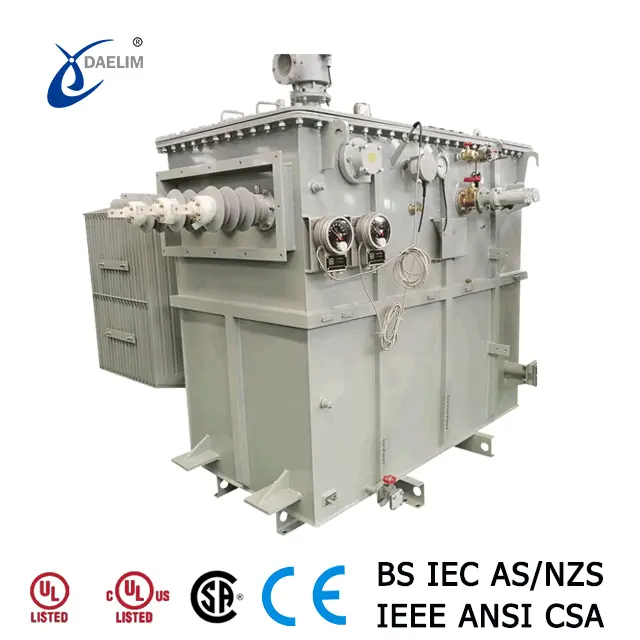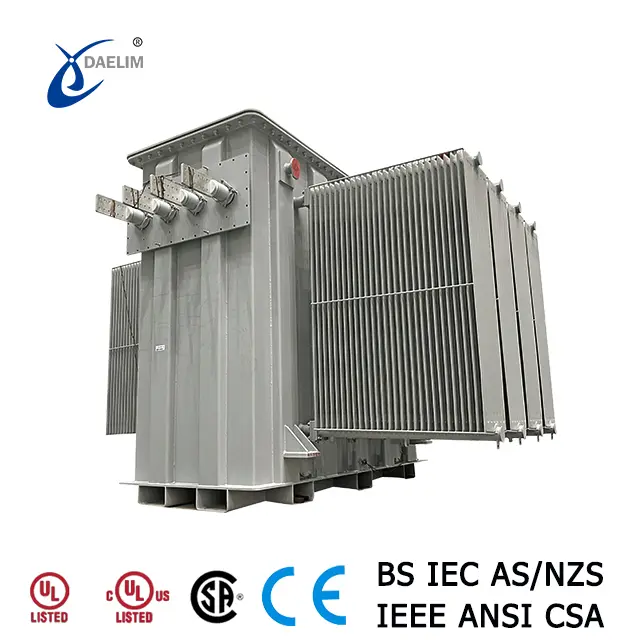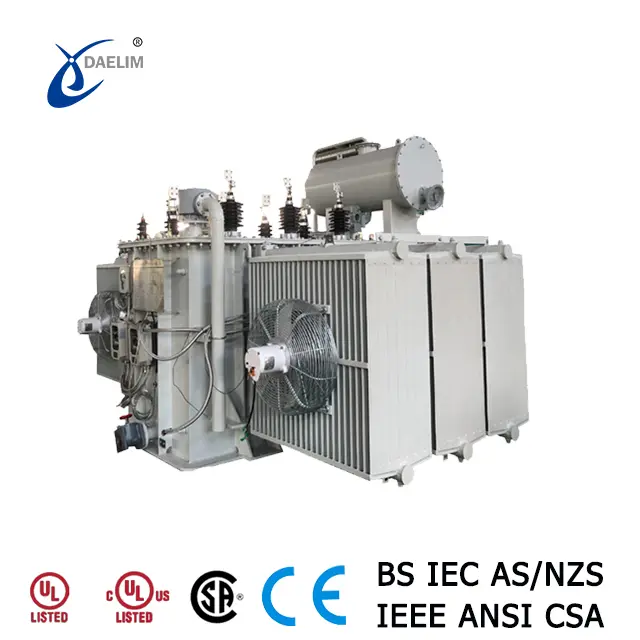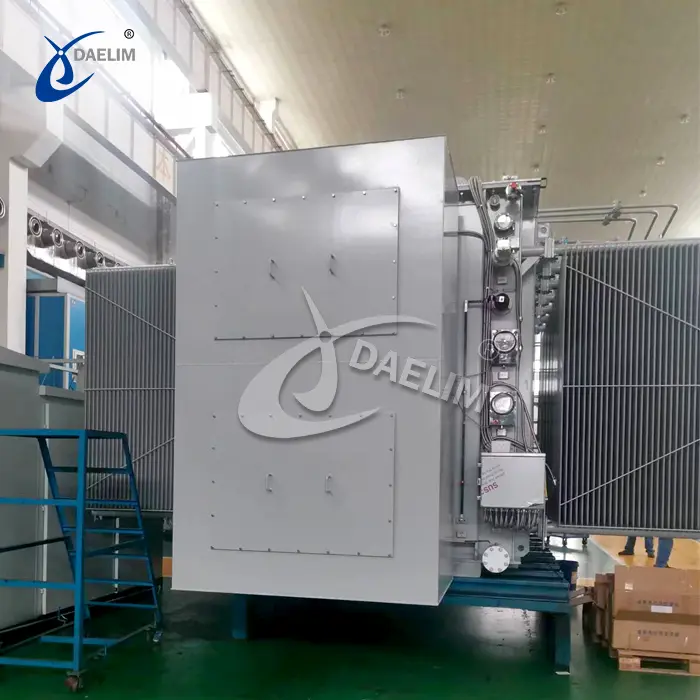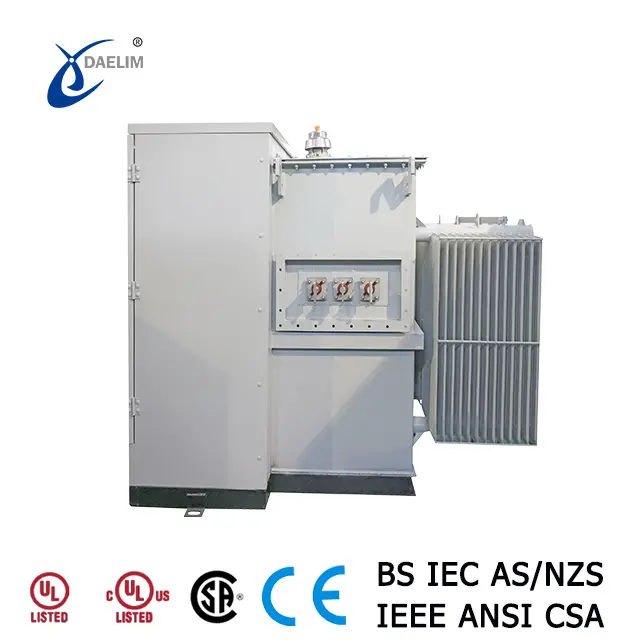Precautions for Analyzing Transformer Faults by Gas Chromatography
The characteristic gas dissolved in transformer oil is not only related to the nature of the fault but also to the structural characteristics of the transformer, the cause of gas generation, the location of the fault, and the severity of the fault. Therefore, a comprehensive judgment and analysis must be carried out. Based on the experience of on-site analysis and judgment, the following issues should be noted:
Determine the Source of Gas
- Verify whether the gas dissolved in the oil originates from reasons other than internal transformer faults to prevent misjudgment.
- For example, if the transformer box is repaired with oil, welding at high temperatures can cause the oil to decompose, producing large amounts of hydrogen and hydrocarbon gases, often mistaken for high-temperature and discharge faults. If welding with oil is necessary, the transformer should be degassed and its characteristic gas content monitored.
- Ensure any added transformer oil is qualified through chromatographic analysis to avoid issues from unqualified oil due to poor storage management.
- On-load tap-changing transformers may have high contents of C2H2, H2, CO, and CO2 in the transformer body oil due to leakage in the switching switch room, requiring careful distinction.
- Residual gas in the transformer body may be released slowly during operation, generally due to manufacturing and installation processes or incomplete degassing after fault handling. Transformer installation should follow process regulations to ensure adequate degassing time and vacuum degree.
- Unclean oil sample containers, chromatograph errors, incorrect operation methods, and other human factors can falsely indicate the presence of flammable characteristic gases in the transformer body.
- External factors such as transformer dampness, the use of active metal materials like stainless steel in manufacturing, and the electrification of oil flow can also increase characteristic gases like C2H2.
Track Abnormal Chromatographic Analysis
- If chromatographic analysis of an operating transformer is abnormal, break the cycle boundary and conduct timely tracking analysis. Compare test data to determine the frequency and cycle of tracking analysis. Identify trends and patterns in previous data to decide whether the transformer should be shut down for further inspection. Comparative data analysis is crucial to ensure correct fault diagnosis, avoiding judgments based on a single data point.
Discharge Fault Precautions
- Discharge faults can easily cause transformer accidents and power outages. C2H2 is the characteristic gas of discharge faults. Even if its content is less than the specified 5 µL/L attention value, it should be taken seriously. If C2H2 content continues to rise or the gas production rate is high, and the cause cannot be determined, the transformer should be stopped immediately to prevent endangering safe operation.
Immediate Response to Transformer Faults
- If a transformer fails during operation (e.g., light gas signaling, heavy gas tripping, differential protection tripping) or an abnormality is detected in electrical tests, an oil sample should be taken immediately for chromatographic analysis. By analyzing the components and content of characteristic gases in the oil, it can be determined whether there is an overheating or discharge fault inside the transformer. Serious high-temperature overheating or discharge faults should prompt immediate maintenance, while general overheating faults can be managed based on load conditions, with enhanced tracking analysis.
Combine Gas Chromatography with Electrical Tests
- Gas chromatography analysis of transformer faults must be combined with electrical test results for accurate fault localization. For example, magnetic circuit overheating faults might show qualified winding DC resistance but increased transformer no-load loss and low core insulation resistance. Conductive circuit faults often result in unbalanced winding DC resistance and abnormal voltage ratios. Insulation faults typically show significant changes in dielectric loss, low insulation resistance, and high winding leakage current. These faults may coexist, complicating diagnosis. Comprehensive analysis should integrate various test results to determine the fault accurately.
Consider Operational History and Conditions
- Fault analysis should consider the transformer’s operating history, environmental conditions, relay protection actions, related electrical connection equipment failures, accessory operating status, appearance abnormalities, failure sounds, changes in electrical quantities, load, and operating voltage. Understanding the transformer’s structural characteristics and accumulating on-site practical experience are essential for accurate fault diagnosis. Learning from and applying similar fault analysis and treatment methods can also be beneficial.
Respond to Light Gas Actions
- When the transformer’s light gas action is activated and gas accumulates in the oil chamber of the gas relay, inspect and take an oil sample for chromatographic analysis to confirm internal faults. If the gas is colorless, odorless, and non-flammable, it is likely air. Causes and measures include:
- Post-installation or maintenance, gas introduced during new oil filling or oil filtering may not be thoroughly vented. Follow oil filling regulations and repeatedly vent gas to prevent it from entering the gas relay.
- Poorly sealed oil pumps can introduce gas into the transformer body. Inspect and rectify any issues with the oil pump.
- If the gas has an odor, it indicates an internal fault, necessitating immediate transformer shutdown. Combine electrical test results with characteristic gas content for comprehensive analysis to identify and address the cause.
Ensure Accurate Chromatographic Analysis
- Accurate and reliable chromatographic analysis data are crucial for precise fault diagnosis. Personnel involved in oil testing and analysis should adhere strictly to preventive test procedures and chromatographic analysis guidelines. When dissolved gas components show an increasing trend, judge based on the gas production rate and shorten tracking analysis cycles if necessary. For equipment with low total hydrocarbon content, avoid relying on relative gas production rates. Newly commissioned transformers should have pre-commissioning test data for comparison.
Using gas chromatography analysis for comprehensive transformer fault diagnosis is sensitive and effective for accurately assessing transformer operating status. Understanding the transformer’s structural characteristics and operating history, adhering to "Guidelines for Chromatographic Analysis of Dissolved Gases in Transformer Oil" and related regulations, and combining results with various electrical test items and on-site practical experience are essential. Prevent misjudgment, guide normal transformer operation, identify potential accident hazards early, implement preventive measures, reduce transformer failures and damage, and ensure safe and reliable power supply to users.
More Resources
Relationship Between Dissolved Gas in Oil and Transformer Faults
Comprehensive Analysis of Large Transformer Faults by Gas Chromatography
Related Products
Related Article
Manifestation Characteristics of Transformer Core Grounding Fault
Transformer core grounding faults cause overheating, gas production, and insulation damage. Symptoms include increased hydrocarbons in oil analysis, high grounding current, and visible core burns or discharge marks. Accurate diagnosis requires comprehensive testing, electrical measurements, and visual inspections.
Prevention and Treatment Measures for Transformer Core Grounding Faults
Prevent transformer core grounding faults by ensuring proper insulation, regular current measurements, and chromatographic analysis. Address faults with temporary measures, inspections, and targeted repairs. Emphasize design and manufacturing standards to prevent faults and ensure safe operation.
The Harm of Outlet Short-Circuit Faults to Power Transformers
Outlet short-circuit faults in power transformers cause winding deformation, insulation damage, and overheating, affecting dynamic and thermal stability. Analysis via oil chromatography and electrical testing guides timely repair planning.
Measures to Prevent Transformer Short-Circuit Accidents
Enhance transformer resilience against short circuits by optimizing design, strengthening insulation, improving maintenance, and upgrading protection systems to ensure reliable grid operation and minimize downtime.
Transforming Global Energy Infrastructure with Large Transformers
Large transformers crucial for global electricity transmission. China leads in eco-friendly, advanced tech. Daelim Transformer excels globally with high-performance units, expanding in North America, meeting rising demand.


